This post’s photos were all taken in November 2016, after “Australia Felix” had enjoyed its best winter rains in many years.
Sir Thomas Mitchell (1792-1855) – remembered still as the celebrated explorer/surveyor “Major Mitchell” – “discovered” much of southwestern Victoria.
Its most dramatic mountains he named “the Grampians“.
Many thousands of years before him, people already lived in and around what they called Gariwerd.
Impressed by the surrounding area’s park-like appearance and its volcanic soils, Mitchell coined the term “Australia Felix”.
For a while, several generations later, many Australians thought of the area as “Malcolm Fraser country”.
The very “Australia Felix” image atop this post is in part the fruit of friendship; I took it on private property, owned by friends who live near Dunkeld.
It is also the fruit of the wettest winter in a good while – southwest Victoria and southeast South Australia can look/be “Australia Felix” but they can also be (and in recent years, generally have been) scrawny, dessicated, drought-ravaged.
This post will conclude where it began, overlooking a currently kingfisher-friendly billabong very near the Wannon River.
I was raised not so far from “Australia Felix”, on a farm in a scraggier place once known as “The Ninety Mile Desert“. ( this link will enable you to see a documentary film about the “taming” of same. Yours truly – as a toddler – is several times present, as my parents’ son. Joan Spencer was my mother, Stuart Spencer is my father)
It was never a desert, at least within human history, but – as with much of Australia – two onetime visitors could each easily form an indelible, opposing impression.
In a “good” year/season the visitor experiences a seemingly-blessed place.
In a “bad” one, even “Australia Felix” looks withered, irredeemably.
In 2016 South Australia’s southeast and Victoria’s southwest were in the sleekest late springtime condition I have ever seen them.
Near Naracoorte is a lagoon that most Australians have never heard of… but one who knows it well once described it as “southern Australia’s Kakadu”.
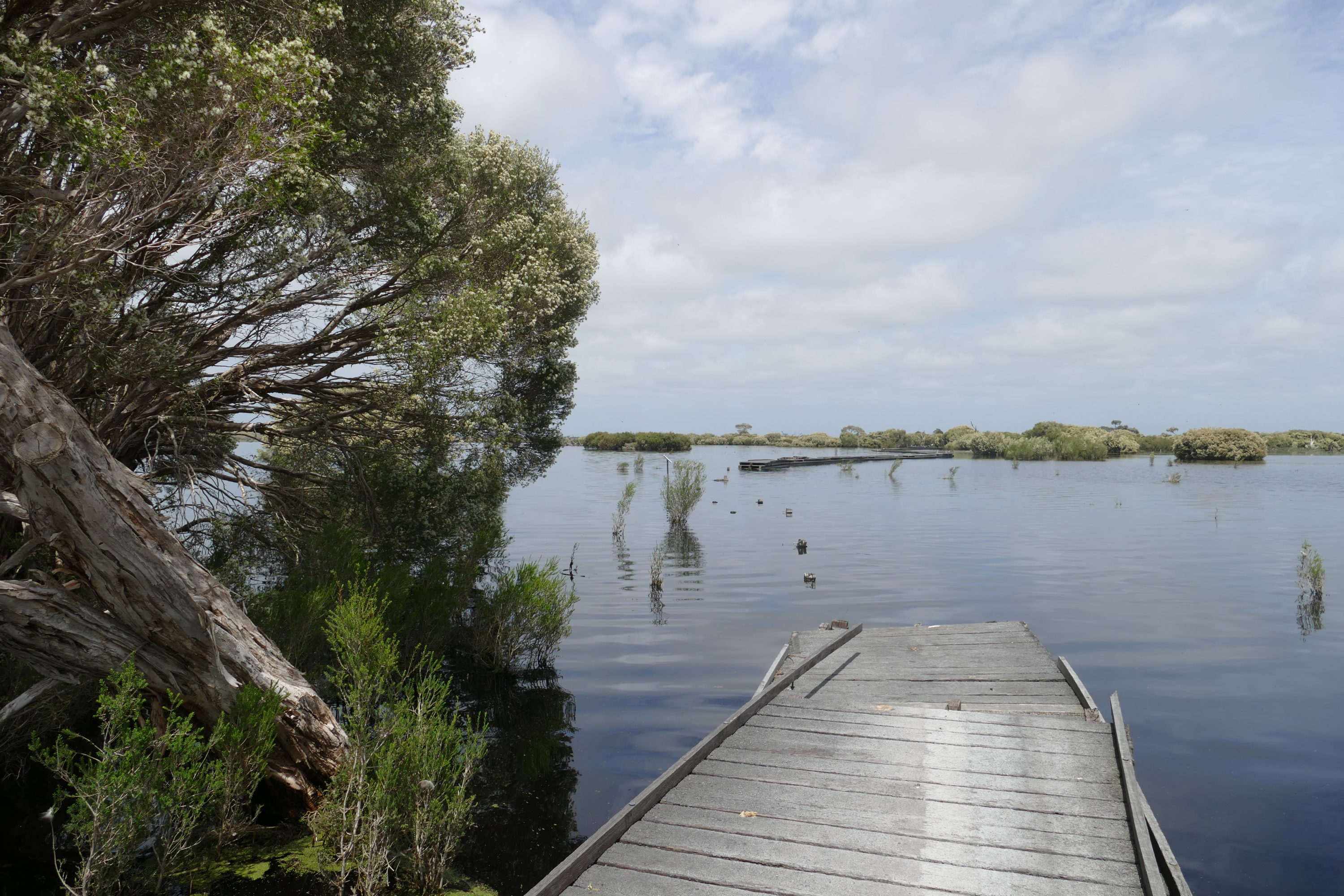
Had my beloved and I visited Bool Lagoon 12 months ago, the main lagoon would not have been a watery place, nor a “magnet” for birds.
This November thousands of ibis wheeled in the skies above.
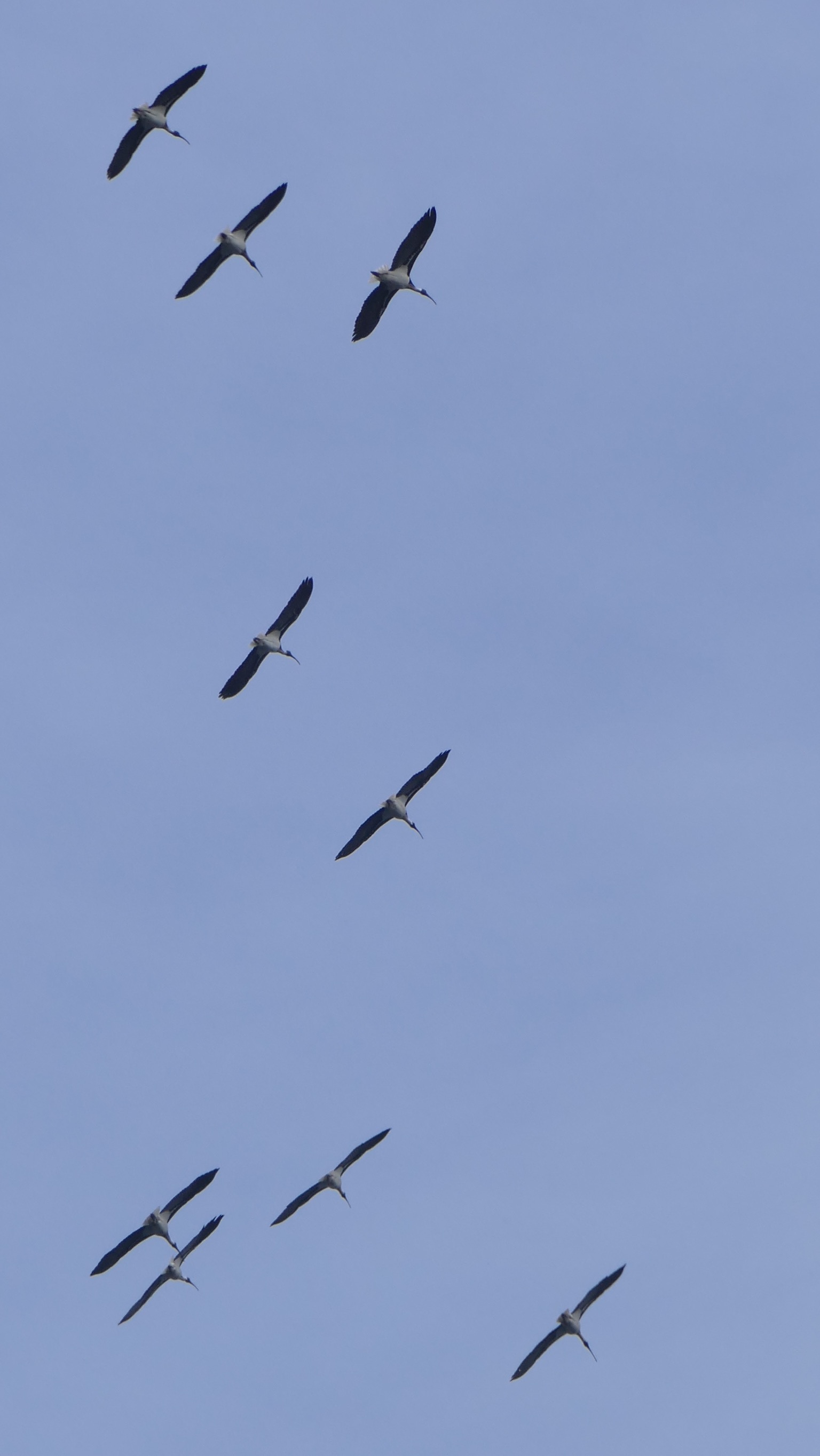
For human birdwatchers, the previously-wonderful boardwalk into the main lagoon is now kaput…presumably, a victim of underfunding.
For magpie geese, the boardwalk has never been better!
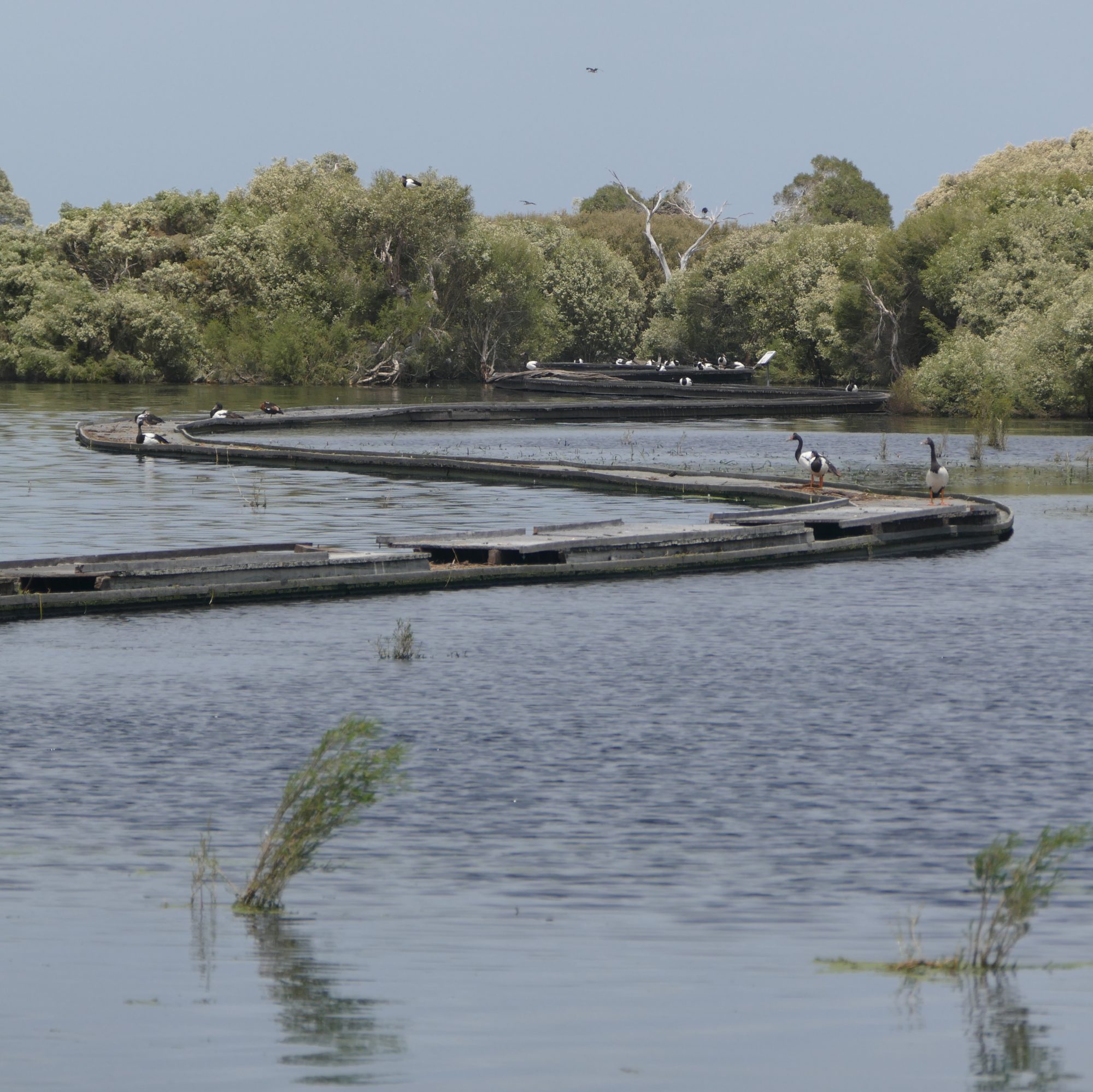
Further north in SA’s southeast, also only a short drive from the Victorian border, is Mundulla, a tiny but surprisingly vibrant, “historic” town.
Most cars driving through do not make the tiny trip to the swamp, just out of town.
Wikipedia’s Mundulla entry and ABC TV’s Backroads both failed to notice the best reason to visit Mundulla: Moot Yang Gunya Swamp.
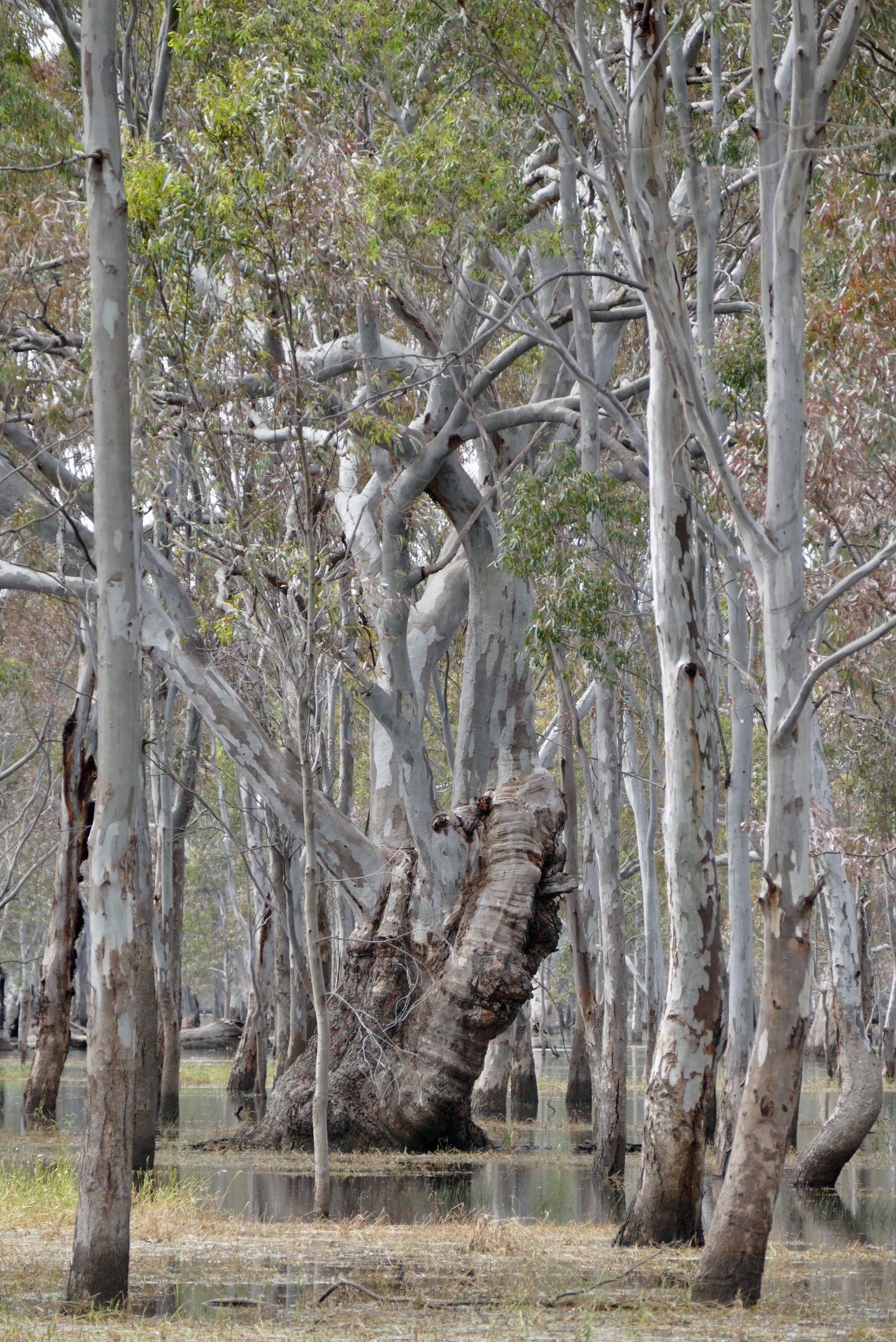
Like Bool Lagoon, Moot Yang Gunya is a marvel, but far from pristine.
Logging, drainage schemes and climate change have all taken their toll.
The splendid, obviously-old River Red Gum ( Eucalyptus camaldulensis ) pictured above almost certainly owes its survival to its “unsuitability”.
That said, the loggers are long gone and the locals generally care for their River Red Gum open forest’s health and intrinsic value; it now has many healthy-looking younger trees.
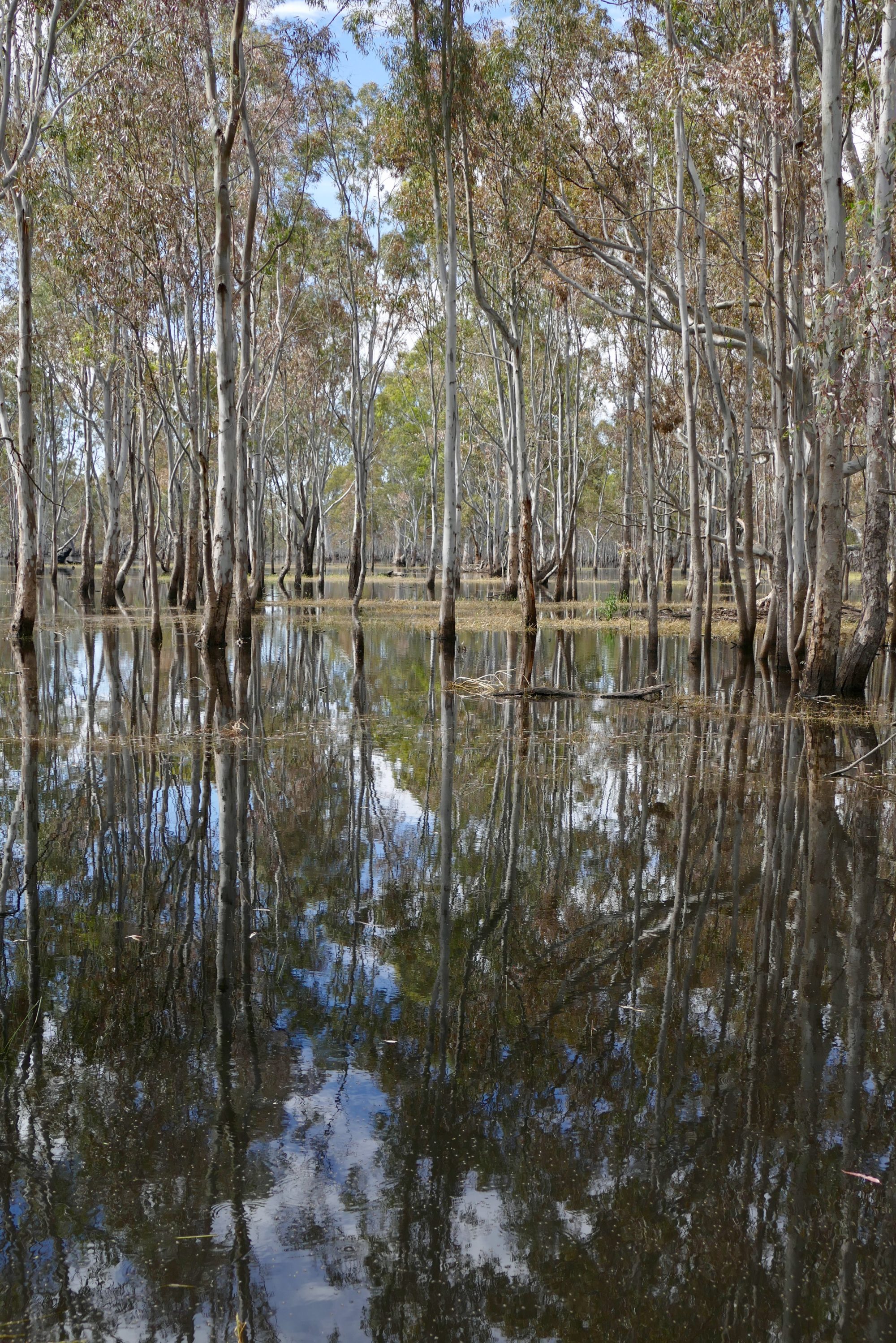
As long as they get their “feet” properly wet, often enough – it does not have to be every year – many should become giants, eventually.
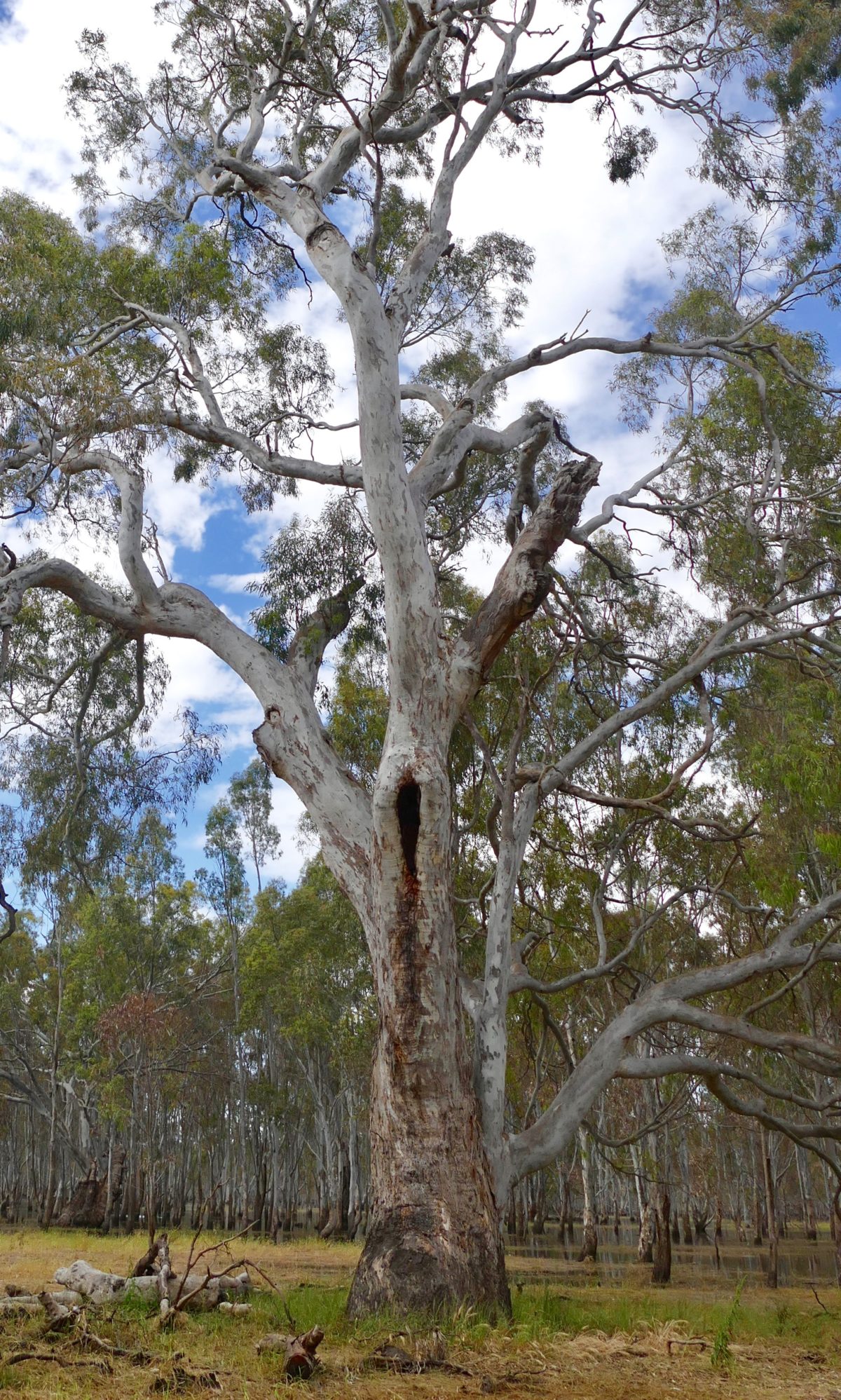
Our recent travels also took us to the actual coast of South Australia’s so-called “Limestone Coast”; created primarily for wine-marketing, the notional “Limestone Coast” strays far from the coast and its embrace takes in places not strongly-connected.
Just south of Robe (a future post will feature the coast at and near to Robe) is Little Dip Conservation Park.
Its various lakes and seasonal wetlands include one very lovely, permanent, surprisingly deep freshwater lake, upon which its namer expended no creativity.
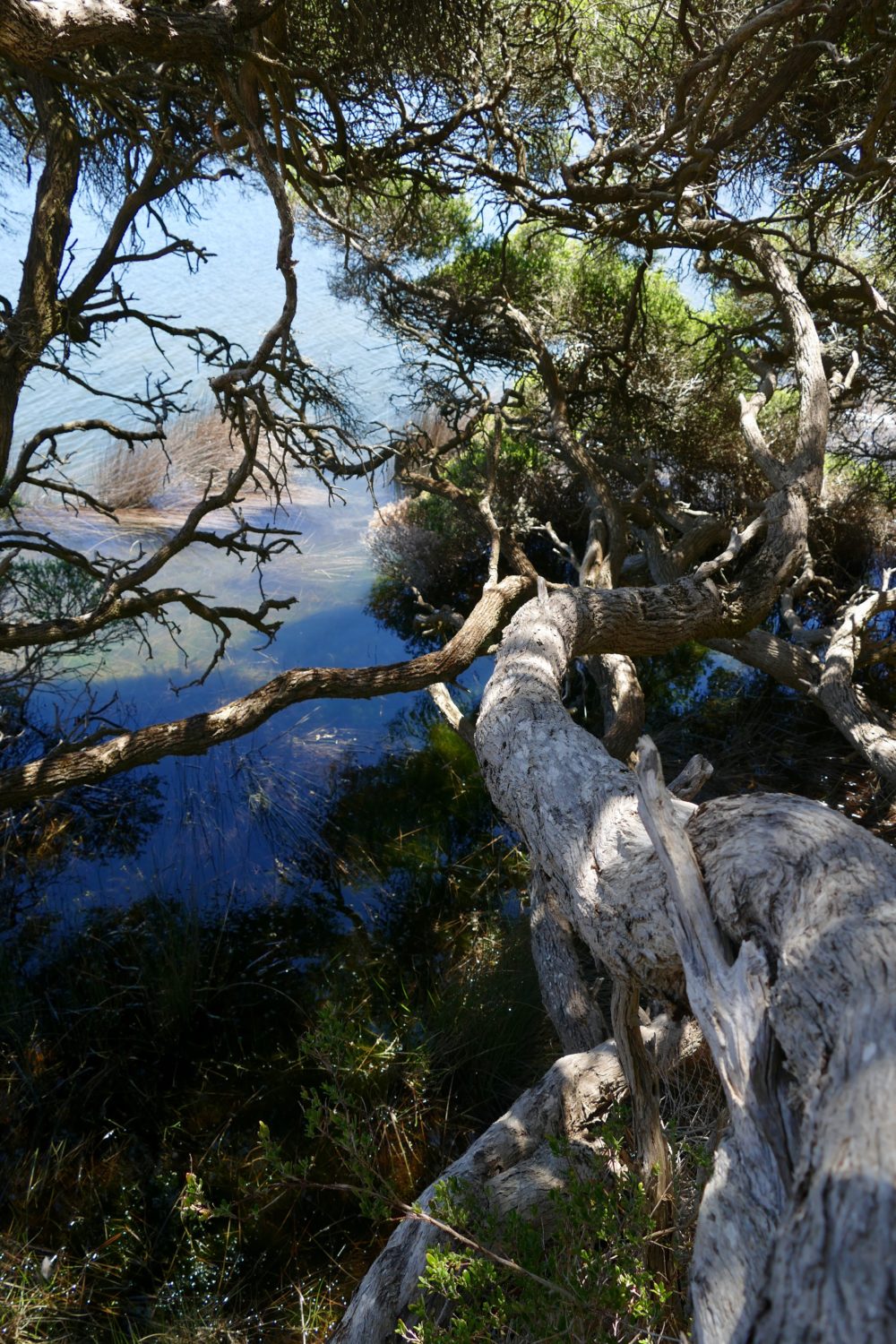
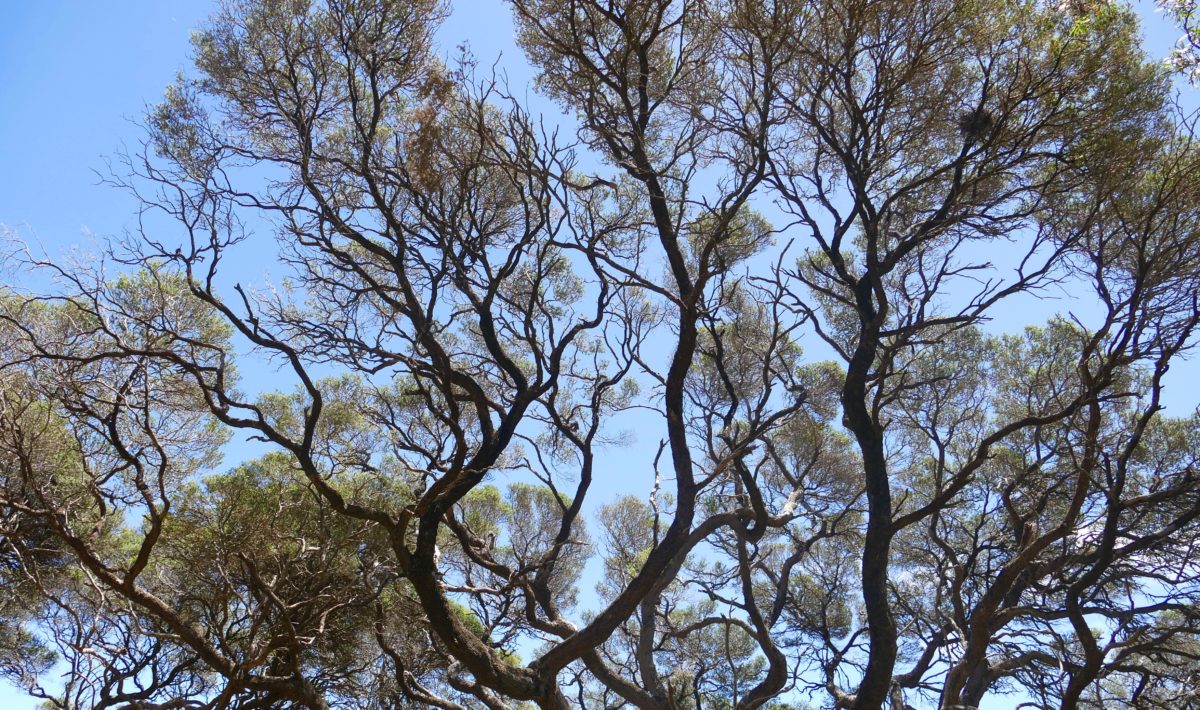
…and, we conclude where this post began, on our friends’ place, between the southeastern Grampians and the Wannon River.
Presumably, their currently-watery billabong is the fruit of the Wannon changing course, slightly.
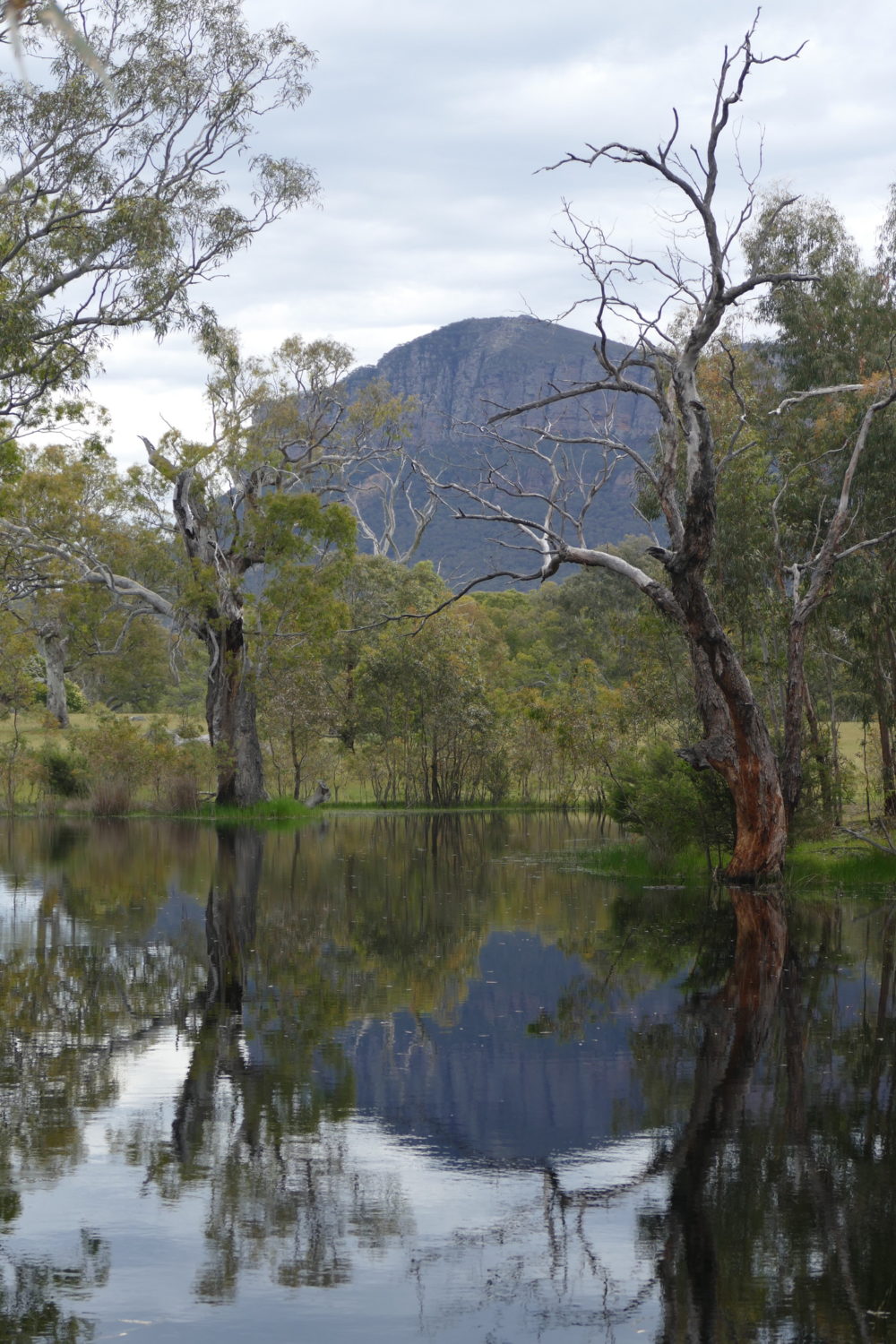
When – as it surely will – the billabong dries out until the next “good” winter comes along, the resident Sacred Kingfishers probably won’t be “sunk”; fish are just part (generally, a minor part) of their diet.
Kookaburras are also members of the kingfisher “family”.
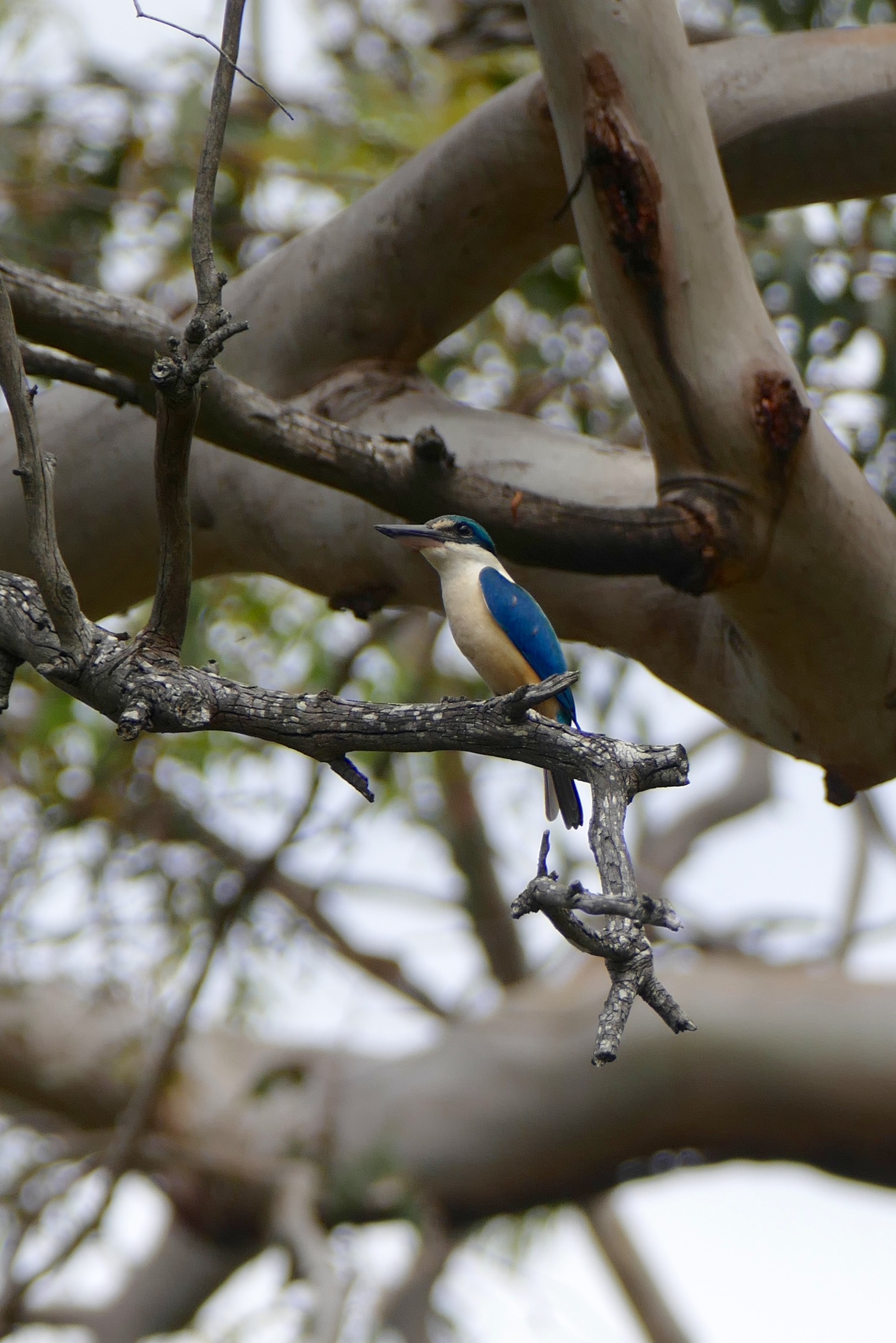
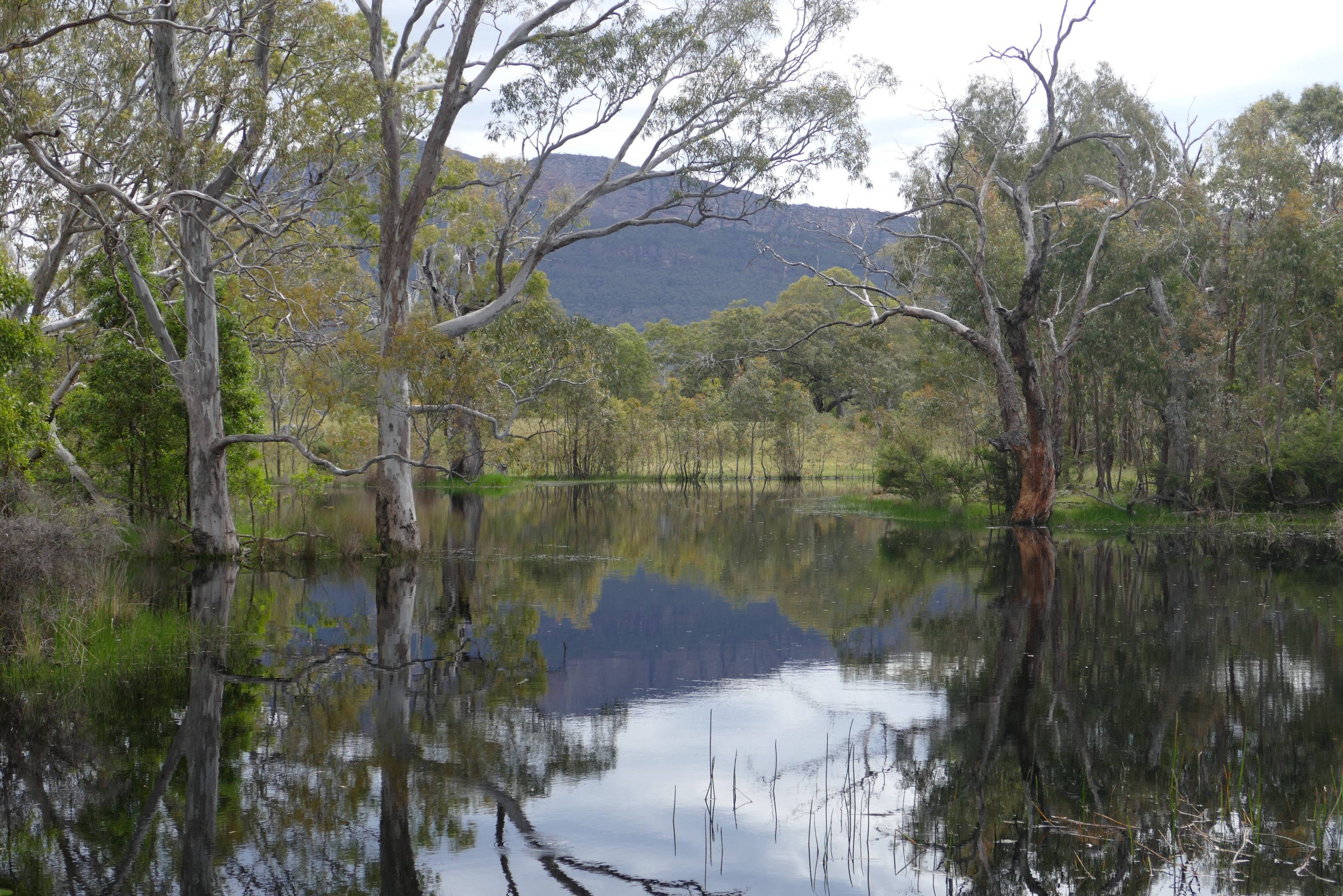
Brilliant Doug, you’ve captured the character of the landscape by using portrait format. Mitchell upon looking out from Mt Abrupt here described it is “one vast park”. Helga & Michael